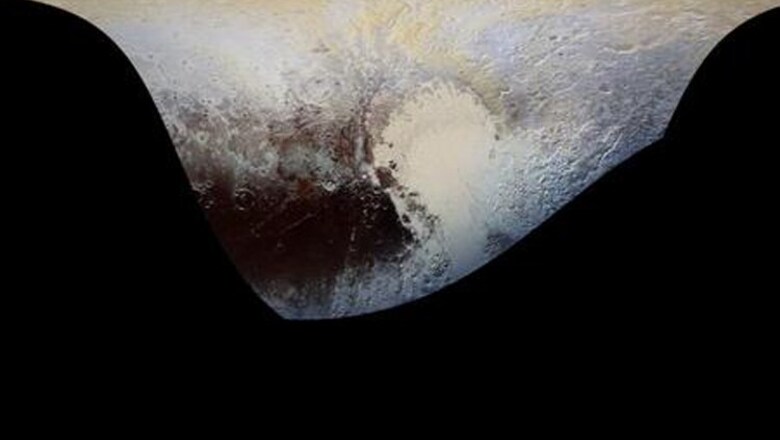
views
Washington: Astronomers analysing new high-resolution images of Pluto from NASA's New Horizons spacecraft have spotted 'snakeskin' textured mountains on the dwarf planet that are both "dazzling and mystifying".
A colour image of Pluto taken by New Horizons unveiled rounded and bizarrely textured mountains, informally named the Tartarus Dorsa, rise up along Pluto's day-night terminator. The image also shows intricate but puzzling patterns of blue-gray ridges and reddish material in between.
"It looks more like tree bark or dragon scales than geology," said William McKinnon, New Horizons Geology, Geophysics and Imaging (GGI) team deputy lead from Washington University. This'll really take time to figure out; maybe it's some combination of internal tectonic forces and ice sublimation driven by Pluto's faint sunlight," he said.
The image, which stretches roughly 530 kilometres across, combines blue, red and infrared images taken by the Ralph/Multispectral Visual Imaging Camera (MVIC) on July 14, 2015, and resolves details and colours on scales as small as 1.3 kilometres.
The "snakeskin" image of Pluto's surface is just one tantalising piece of data New Horizons sent back. The spacecraft also captured the highest-resolution colour view yet of Pluto, as well as detailed spectral maps and other high-resolution images.
A new "extended colour" view of Pluto - taken by MVIC on July 14 shows the extraordinarily rich colour palette of Pluto. "Pluto's surface colours were enhanced in this view to reveal subtle details in a rainbow of pale blues, yellows, oranges, and deep reds," said John Spencer, a GGI deputy lead from Southwest Research Institute (SwRI) in Boulder, Colorado.
Additionally, a high-resolution swath across Pluto taken by New Horizons' narrow-angle Long Range Reconnaissance Imager (LORRI) on July 14, and downlinked on September 20, homes in on details of Pluto's geology.
These images - the highest-resolution yet available of Pluto - show features that resemble dunes, the older shoreline of a shrinking glacial ice lake, and fractured, angular water ice mountains with sheer cliffs.
A closer look at the smooth, bright surface of the informally named Sputnik Planum shows that it is pockmarked by dense patterns of pits, low ridges and scalloped terrain. Dunes of bright volatile ice particles are a possible explanation but the ices of Sputnik may be especially susceptible to sublimation and formation of such corrugated ground, researchers said.
Beyond the new images, new compositional information comes from a just-obtained map of methane ice across part of Pluto's surface that shows striking contrasts. Sputnik Planum has abundant methane, while the region informally named Cthulhu Regio shows none, aside from a few isolated ridges and crater rims. Mountains along the west flank of Sputnik lack methane as well.




















Comments
0 comment